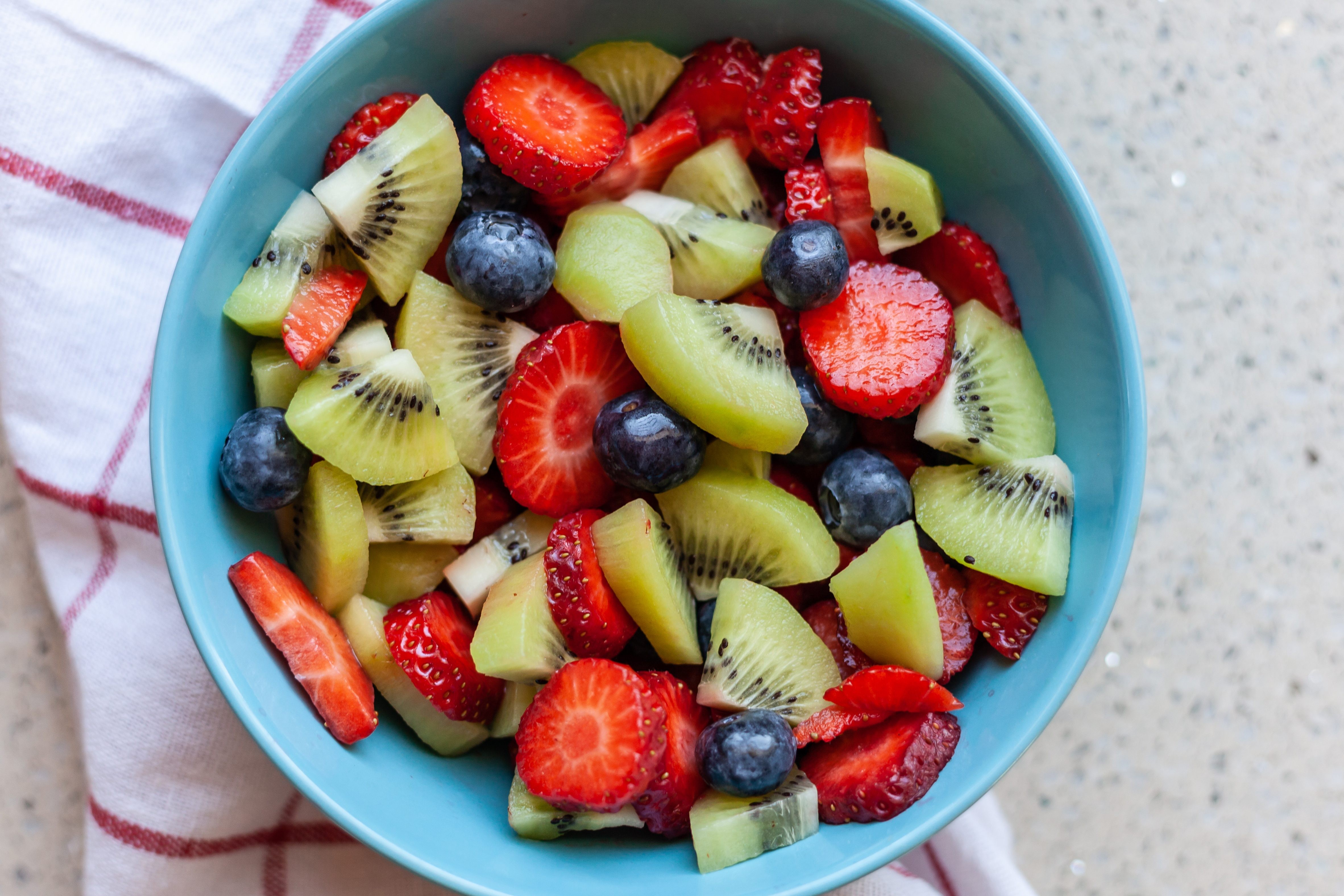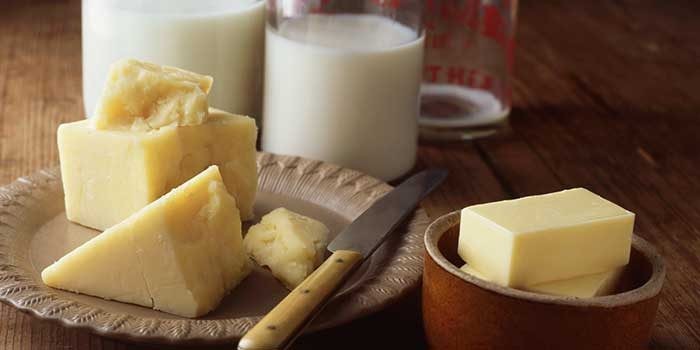Processed foods often get a bad rap, but how do they stack up when it comes to histamine levels? At FOODS.EDU.VN, we delve into the relationship between processed foods and histamine, exploring which ones are likely to be high in histamine and why. Discover how to make informed dietary choices and minimize your histamine exposure with our in-depth guide, focusing on food sensitivities, histamine intolerance, and dietary management.
1. Understanding Histamine and Its Role in the Body
Histamine is a naturally occurring amine involved in numerous bodily functions, including immune response, digestion, and neurotransmission. Produced from the amino acid histidine, histamine is stored in mast cells and basophils. It is released when the body detects an allergen or inflammatory trigger. While histamine plays a vital role in protecting the body, an excess can lead to histamine intolerance, causing a range of unpleasant symptoms.
Understanding the process of histamine production and breakdown is crucial for managing histamine levels. Factors influencing histamine levels include gut health, enzyme activity, and the presence of other compounds that either release or block histamine.
1.1. What is Histamine Intolerance?
Histamine intolerance occurs when the body cannot break down histamine efficiently, leading to a buildup. This can happen due to a deficiency in the diamine oxidase (DAO) enzyme, which is primarily responsible for breaking down histamine in the digestive tract, or an overproduction of histamine.
Symptoms of histamine intolerance vary widely and can affect multiple systems, including:
- Skin: Hives, itching, flushing
- Digestive system: Abdominal pain, bloating, diarrhea, constipation
- Respiratory system: Nasal congestion, sneezing, asthma
- Cardiovascular system: Headaches, migraines, heart palpitations
- Neurological system: Anxiety, fatigue, dizziness
Alt: A woman is depicted with a visible skin rash on her arm, illustrating a potential symptom of histamine intolerance related to dietary factors.
1.2. Factors Contributing to Histamine Buildup
Several factors can contribute to histamine buildup in the body:
- DAO Deficiency: Genetic predisposition, medications, and gastrointestinal disorders can reduce DAO activity.
- Increased Histamine Production: Certain bacteria in the gut can produce histamine, exacerbating the issue.
- Histamine-Releasing Foods: Some foods trigger mast cells to release histamine, even if they are not high in histamine themselves.
- DAO-Blocking Foods: Certain foods can inhibit DAO activity, preventing the breakdown of histamine.
- Leaky Gut Syndrome: Increased intestinal permeability allows more histamine to enter the bloodstream.
Managing these factors is crucial for individuals with histamine intolerance. Identifying and avoiding histamine-releasing and DAO-blocking foods can significantly reduce symptoms.
1.3. The Role of Diet in Managing Histamine Levels
Diet plays a crucial role in managing histamine levels. By choosing low-histamine foods and avoiding high-histamine options, individuals can minimize their histamine load and alleviate symptoms.
A low-histamine diet typically involves avoiding aged, fermented, and processed foods, as these tend to have higher histamine levels. Freshly prepared, whole foods are generally better tolerated.
2. The Histamine Content of Processed Foods: What You Need to Know
Processed foods often undergo various processes such as fermentation, aging, and the addition of preservatives, which can significantly increase their histamine content. Understanding which processed foods are high in histamine is essential for those managing histamine intolerance.
2.1. Defining Processed Foods
Processed foods are any foods that have been altered from their natural state. This can include simple processes like canning, freezing, drying, and milling, as well as more complex processes involving the addition of ingredients like preservatives, sweeteners, and artificial colors.
Examples of processed foods include:
- Canned goods
- Frozen meals
- Packaged snacks
- Processed meats
- Fermented foods
- Baked goods
2.2. Why Are Processed Foods Often High in Histamine?
Several factors contribute to the high histamine content of processed foods:
- Fermentation: Fermented foods like sauerkraut, kimchi, and yogurt are rich in histamine due to the activity of histamine-producing bacteria.
- Aging: Aged foods like cheese and cured meats contain high levels of histamine as bacteria break down proteins over time.
- Storage: Improper storage and prolonged shelf life can increase histamine levels in processed foods.
- Additives: Certain additives and preservatives can either contain histamine or trigger histamine release in the body.
- Bacterial Growth: Processed foods that are not properly stored can support the growth of histamine-producing bacteria.
2.3. Common High-Histamine Processed Foods
| Food Category | High-Histamine Processed Foods |
|---|---|
| Processed Meats | Smoked meats, sausages, bacon, salami, pre-packed minced meat |
| Fermented Foods | Sauerkraut, kimchi, yogurt, kefir |
| Aged Cheeses | Parmesan, cheddar, gouda, blue cheese |
| Canned Goods | Canned fish (tuna, sardines, anchovies), canned vegetables |
| Baked Goods | Sourdough bread, pastries with yeast, malted barley products |
| Snacks | Potato chips with additives, processed crackers, chocolate products |



2.4. Low-Histamine Alternatives to Processed Foods
While many processed foods are high in histamine, there are alternatives that individuals with histamine intolerance can enjoy:
- Freshly Prepared Meals: Cooking meals from scratch using fresh ingredients allows for better control over histamine levels.
- Homemade Fermented Foods: If fermented foods are desired, making them at home with specific low-histamine cultures may be an option.
- Fresh or Frozen Produce: Opting for fresh or frozen fruits and vegetables without additives can reduce histamine exposure.
- Gluten-Free Options: Gluten-free alternatives often avoid ingredients like barley malt, which can be high in histamine.
- Additive-Free Snacks: Choosing snacks with minimal additives and preservatives can help minimize histamine intake.
3. Specific Processed Foods and Their Histamine Levels
A closer look at specific types of processed foods can help individuals better navigate their diets and make informed choices.
3.1. Processed Meats: A Histamine Hotspot
Processed meats like sausages, bacon, and salami are often very high in histamine. The processes of smoking, curing, and aging encourage the growth of bacteria that produce histamine.
- Smoking: Smoking involves exposing meat to smoke, which can introduce histamine-producing bacteria.
- Curing: Curing involves preserving meat with salt and nitrates, which can also promote bacterial growth.
- Aging: Aging allows enzymes to break down proteins, leading to increased histamine levels.
Alternative: Opt for fresh, unprocessed meats that are cooked immediately. Freezing meat promptly can also help reduce histamine buildup.
3.2. Fermented Foods: Beneficial or Problematic?
Fermented foods like sauerkraut, kimchi, yogurt, and kefir are known for their probiotic benefits, but they are also high in histamine. The fermentation process involves bacteria that convert sugars into acids, producing histamine as a byproduct.
- Sauerkraut and Kimchi: These fermented vegetables are rich in histamine and should be avoided by individuals with histamine intolerance.
- Yogurt and Kefir: Traditional yogurt and kefir can be high in histamine due to the fermentation process.
Alternative: Consider making homemade fermented foods using specific low-histamine cultures. Alternatively, explore other sources of probiotics that are not fermented.
3.3. Aged Cheeses: A Histamine Minefield
Aged cheeses like parmesan, cheddar, gouda, and blue cheese contain high levels of histamine. The aging process allows bacteria to break down proteins, leading to histamine production.
- Parmesan: This hard, aged cheese is very high in histamine and should be avoided.
- Cheddar: Mature cheddar cheese contains significant histamine levels.
- Blue Cheese: The mold used in blue cheese production can contribute to histamine formation.
Alternative: Fresh cheeses like mozzarella, ricotta, and cream cheese generally have lower histamine levels, but they should still be consumed in moderation.
3.4. Canned Goods: Convenience at a Cost
Canned goods like canned fish (tuna, sardines, anchovies) and canned vegetables can be high in histamine. The canning process and prolonged storage can promote bacterial growth and histamine production.
- Canned Fish: Fish, in particular, can develop high histamine levels if not processed and stored properly.
- Canned Vegetables: While generally lower in histamine than canned fish, canned vegetables can still contain elevated levels due to storage and processing.
Alternative: Opt for fresh or frozen fish and vegetables whenever possible. If canned goods are necessary, choose those with minimal additives and preservatives.
Alt: This display contrasts fresh vegetables alongside canned varieties, emphasizing the discussion around varying histamine levels in each option.
3.5. Baked Goods: Yeast and Fermentation Issues
Baked goods, especially those made with yeast or fermented starters like sourdough, can be high in histamine. Yeast and fermentation processes contribute to histamine production.
- Sourdough Bread: The long fermentation process in sourdough bread leads to high histamine levels.
- Pastries with Yeast: Yeast-based pastries and cakes can also contain elevated histamine levels.
Alternative: Gluten-free baked goods made without yeast or fermented starters may be better tolerated. Rice cakes and other simple, additive-free options can also be considered.
3.6. Snacks: Hidden Histamine Sources
Many processed snacks contain hidden sources of histamine. Additives, preservatives, and flavor enhancers can contribute to histamine levels or trigger histamine release in the body.
- Potato Chips with Additives: Flavorings and preservatives in potato chips can exacerbate histamine intolerance symptoms.
- Processed Crackers: Many crackers contain additives and preservatives that can raise histamine levels.
- Chocolate Products: Chocolate is a known histamine liberator and should be avoided by those with histamine intolerance.
Alternative: Opt for simple, whole-food snacks like fresh fruits (excluding high-histamine options), vegetables, and nuts (if tolerated).
4. Strategies for Reducing Histamine Intake from Processed Foods
Managing histamine intolerance involves adopting strategies to reduce histamine intake from processed foods.
4.1. Reading Food Labels Carefully
Carefully reading food labels is crucial for identifying potential histamine sources in processed foods. Look for ingredients like:
- Fermented ingredients (sauerkraut, kimchi, yogurt)
- Aged ingredients (cheese, cured meats)
- Additives and preservatives (artificial colors, flavor enhancers)
- Yeast extracts
- Malted barley
4.2. Choosing Fresh Over Processed
Whenever possible, choose fresh, whole foods over processed options. Freshly prepared meals allow for better control over ingredients and histamine levels.
- Buy Local Produce: Local farmers markets offer fresh, seasonal produce with minimal processing.
- Cook at Home: Preparing meals at home ensures control over ingredients and reduces exposure to additives and preservatives.
- Plan Meals: Planning meals in advance can help avoid last-minute reliance on processed foods.
4.3. Proper Food Storage and Handling
Proper food storage and handling can significantly reduce histamine buildup in foods.
- Refrigerate Promptly: Refrigerate leftovers and perishable foods promptly to slow bacterial growth.
- Freeze Foods: Freezing foods can help preserve them and reduce histamine production.
- Use Airtight Containers: Store foods in airtight containers to prevent contamination and bacterial growth.
- Avoid Reheating Multiple Times: Reheating leftovers multiple times can increase histamine levels.
Alt: A refrigerator showcases containers filled with various leftover foods, emphasizing the significance of appropriate storage methods in reducing histamine proliferation.
4.4. Cooking Methods to Minimize Histamine
Certain cooking methods can help minimize histamine levels in foods.
- Avoid Slow Cooking: Slow cooking can increase histamine levels due to prolonged exposure to heat.
- Use Fresh Ingredients: Using fresh ingredients minimizes the time available for histamine buildup.
- Cook at High Temperatures: Cooking at high temperatures can help kill histamine-producing bacteria.
- Avoid Leftovers: Preparing only the amount of food needed for a single meal reduces the need for leftovers.
4.5. Identifying Personal Trigger Foods
Histamine tolerance varies from person to person. Identifying personal trigger foods is essential for managing histamine intolerance.
- Keep a Food Diary: Track food intake and symptoms to identify patterns and potential triggers.
- Elimination Diet: Work with a healthcare professional to implement an elimination diet to identify trigger foods.
- Consider Testing: Histamine intolerance testing may help identify specific sensitivities.
5. The Impact of Food Additives and Preservatives on Histamine Levels
Food additives and preservatives can play a significant role in histamine levels, either by containing histamine themselves or by triggering histamine release in the body.
5.1. Common High-Histamine Additives
Several additives are known to be high in histamine or to trigger histamine release:
- Artificial Colors: Some synthetic food colorings can trigger mast cell activation and histamine release.
- Flavor Enhancers: Monosodium glutamate (MSG) and other flavor enhancers can exacerbate histamine intolerance symptoms.
- Preservatives: Sulfites and benzoates, commonly used as preservatives, can increase histamine levels.
- Yeast Extracts: Yeast extracts are high in histamine and should be avoided.
- Malt Extracts: Malt extracts, often found in baked goods and cereals, can contribute to histamine levels.
5.2. Additives to Avoid
| Additive Type | Common Additives to Avoid |
|---|---|
| Artificial Colors | Tartrazine (E102), Sunset Yellow (E110), Carmine (E120) |
| Flavor Enhancers | Monosodium Glutamate (MSG) |
| Preservatives | Sulfites (E220-E228), Benzoates (E210-E219) |
| Yeast and Malt Extracts | Yeast Extract, Malt Extract |
5.3. Reading Ingredient Lists for Additives
Carefully reading ingredient lists is essential for identifying and avoiding high-histamine additives. Look for the specific names and E numbers of additives to make informed choices.
5.4. Choosing Additive-Free Options
Opting for foods with minimal additives and preservatives can significantly reduce histamine exposure.
- Organic Foods: Organic foods are often free from artificial colors, flavor enhancers, and preservatives.
- Whole Foods: Whole, unprocessed foods naturally have fewer additives.
- Homemade Products: Making products at home allows for complete control over ingredients.
6. Lifestyle Factors and Their Influence on Histamine Intolerance
Lifestyle factors beyond diet can also influence histamine intolerance and overall histamine levels.
6.1. Stress Management
Stress can trigger mast cell activation and histamine release. Managing stress through relaxation techniques, exercise, and mindfulness can help reduce histamine levels.
- Meditation: Regular meditation can reduce stress and promote relaxation.
- Yoga: Yoga combines physical exercise with mindfulness and can help lower stress levels.
- Deep Breathing Exercises: Deep breathing exercises can calm the nervous system and reduce stress.
6.2. Sleep Hygiene
Poor sleep can exacerbate histamine intolerance symptoms. Practicing good sleep hygiene can improve sleep quality and reduce histamine levels.
- Consistent Sleep Schedule: Maintaining a consistent sleep schedule helps regulate the body’s natural rhythms.
- Dark and Quiet Room: Creating a dark, quiet, and cool sleep environment can improve sleep quality.
- Avoid Screen Time: Avoid screen time before bed, as the blue light can interfere with sleep.
6.3. Exercise
Regular exercise can help reduce stress and improve overall health, but intense exercise can also trigger histamine release. Moderate exercise is generally recommended for individuals with histamine intolerance.
- Walking: Regular walks can improve circulation and reduce stress.
- Swimming: Swimming is a low-impact exercise that can improve cardiovascular health.
- Gentle Yoga: Gentle yoga can promote relaxation and reduce stress.
6.4. Environmental Factors
Environmental factors like allergens, pollutants, and temperature changes can also influence histamine levels.
- Allergen Avoidance: Minimize exposure to allergens like pollen, dust mites, and pet dander.
- Air Filtration: Use air purifiers to reduce indoor air pollution.
- Temperature Regulation: Avoid extreme temperature changes, which can trigger histamine release.
7. The Gut-Histamine Connection: Improving Gut Health to Manage Histamine Intolerance
The gut plays a crucial role in managing histamine levels. A healthy gut supports the production of DAO and helps regulate histamine-producing bacteria.
7.1. Probiotics for Histamine Intolerance
Certain probiotics can help reduce histamine levels in the gut. Choose strains that do not produce histamine and support DAO activity.
- Lactobacillus rhamnosus: This strain has been shown to support gut health and reduce histamine levels.
- Bifidobacterium infantis: This strain can help regulate the gut microbiome and reduce histamine production.
- Lactobacillus plantarum: Some strains of L. plantarum can help improve gut barrier function and reduce histamine absorption.
7.2. Prebiotics for Gut Health
Prebiotics are non-digestible fibers that feed beneficial gut bacteria. Consuming prebiotic-rich foods can help improve gut health and reduce histamine levels.
- Onions: Onions are a good source of prebiotics and can help support gut health.
- Garlic: Garlic contains prebiotics that can promote the growth of beneficial gut bacteria.
- Leeks: Leeks are a good source of prebiotics and can help improve gut health.
7.3. Foods to Support Gut Health
Consuming foods that support gut health can help manage histamine intolerance.
- Bone Broth: Bone broth contains collagen and amino acids that can help heal the gut lining.
- Ginger: Ginger has anti-inflammatory properties and can help soothe the digestive system.
- Turmeric: Turmeric contains curcumin, which has anti-inflammatory properties and can help improve gut health.
7.4. Foods to Avoid for Gut Health
Certain foods can damage the gut lining and exacerbate histamine intolerance symptoms.
- Gluten: Gluten can trigger inflammation in the gut and should be avoided by those with gluten sensitivity.
- Dairy: Dairy can be difficult to digest and may exacerbate histamine intolerance symptoms.
- Processed Foods: Processed foods often contain additives and preservatives that can damage the gut lining.
- Sugar: Excessive sugar intake can promote the growth of harmful bacteria in the gut.
8. Supplements for Managing Histamine Intolerance
Supplements can play a supportive role in managing histamine intolerance by boosting DAO activity and reducing histamine levels.
8.1. DAO Supplements
DAO supplements contain the diamine oxidase enzyme and can help break down histamine in the digestive tract.
- Taking DAO Supplements: Take DAO supplements before meals to help break down histamine from food.
- Consulting with a Healthcare Professional: Consult with a healthcare professional before starting DAO supplements to determine the appropriate dosage.
8.2. Vitamin C
Vitamin C is a natural antihistamine and can help reduce histamine levels in the body.
- Dosage: Take vitamin C supplements in divided doses throughout the day to maintain consistent levels.
- Food Sources: Consume vitamin C-rich foods like citrus fruits (in moderation, if tolerated), berries, and leafy green vegetables.
8.3. Quercetin
Quercetin is a flavonoid with antihistamine and anti-inflammatory properties.
- Benefits: Quercetin can help stabilize mast cells and reduce histamine release.
- Food Sources: Consume quercetin-rich foods like onions, apples, and berries.
8.4. Magnesium
Magnesium is essential for DAO enzyme activity and can help reduce histamine levels.
- Food Sources: Consume magnesium-rich foods like leafy green vegetables, nuts, and seeds.
- Supplementation: Consider magnesium supplementation if dietary intake is insufficient.
9. Practical Tips for Following a Low-Histamine Diet
Following a low-histamine diet can be challenging, but with careful planning and preparation, it is possible to manage histamine intolerance effectively.
9.1. Meal Planning
Plan meals in advance to ensure you have access to low-histamine options.
- Create a Meal Schedule: Develop a weekly meal schedule to avoid last-minute reliance on processed foods.
- Prepare Shopping Lists: Prepare detailed shopping lists based on your meal plan to ensure you have all necessary ingredients.
- Batch Cooking: Prepare large batches of low-histamine meals and freeze them for future use.
9.2. Shopping Strategies
Adopt smart shopping strategies to ensure you are choosing the best options for a low-histamine diet.
- Read Labels Carefully: Scrutinize food labels for potential histamine sources and additives.
- Shop at Local Farmers Markets: Local farmers markets offer fresh, seasonal produce with minimal processing.
- Choose Fresh and Frozen Options: Opt for fresh or frozen fruits, vegetables, and meats over canned or processed options.
9.3. Cooking Techniques
Utilize cooking techniques that minimize histamine buildup in foods.
- Cook Freshly: Cook meals using fresh ingredients to minimize the time available for histamine production.
- Avoid Slow Cooking: Slow cooking can increase histamine levels due to prolonged exposure to heat.
- Use High Heat: Cooking at high temperatures can help kill histamine-producing bacteria.
9.4. Dining Out
Dining out can be challenging on a low-histamine diet, but it is possible with careful planning and communication.
- Call Ahead: Call the restaurant in advance to inquire about ingredients and preparation methods.
- Choose Simple Dishes: Opt for simple dishes with minimal sauces and additives.
- Communicate Your Needs: Clearly communicate your dietary restrictions to the server and kitchen staff.
- Bring Your Own Food: If necessary, bring your own food to ensure you have a safe and suitable meal.
10. Seeking Professional Guidance
Managing histamine intolerance often requires professional guidance from healthcare providers and registered dietitians.
10.1. Consulting with a Healthcare Provider
Consult with a healthcare provider to discuss your symptoms and receive a proper diagnosis.
- Diagnostic Testing: Healthcare providers can order tests to assess histamine levels and DAO activity.
- Medical Advice: Healthcare providers can provide medical advice and recommend appropriate treatments.
- Medication Management: Healthcare providers can help manage medications that may be contributing to histamine intolerance.
10.2. Working with a Registered Dietitian
A registered dietitian can help develop a personalized low-histamine diet plan and provide ongoing support.
- Personalized Diet Plan: A registered dietitian can create a customized diet plan based on your individual needs and preferences.
- Nutritional Guidance: A registered dietitian can provide nutritional guidance and help ensure you are meeting your nutrient needs.
- Meal Planning Assistance: A registered dietitian can assist with meal planning and provide recipe ideas.
- Ongoing Support: A registered dietitian can provide ongoing support and help you navigate the challenges of following a low-histamine diet.
At FOODS.EDU.VN, we understand the complexities of managing histamine intolerance and the importance of making informed dietary choices. Our comprehensive resources are designed to provide you with the knowledge and tools you need to navigate the world of histamine intolerance and lead a healthier, more comfortable life.
FAQ: Processed Foods and Histamine
-
What is histamine intolerance?
Histamine intolerance occurs when your body can’t break down histamine properly, leading to a buildup and various symptoms. -
Why are processed foods often high in histamine?
Processes like fermentation, aging, and the addition of preservatives can increase histamine levels in processed foods. -
Which processed meats are high in histamine?
Smoked meats, sausages, bacon, and salami are typically high in histamine. -
Are fermented foods always bad for histamine intolerance?
Yes, fermented foods like sauerkraut, kimchi, and yogurt are generally high in histamine and should be avoided. -
What types of cheese should I avoid if I have histamine intolerance?
Aged cheeses like parmesan, cheddar, gouda, and blue cheese are high in histamine. -
Can canned goods increase histamine levels?
Yes, canned fish and vegetables can contain elevated histamine levels due to storage and processing. -
What are some low-histamine alternatives to processed snacks?
Opt for fresh fruits (excluding high-histamine options), vegetables, and nuts (if tolerated). -
How can I reduce histamine intake when dining out?
Call ahead, choose simple dishes, communicate your needs, and consider bringing your own food if necessary. -
Can food additives and preservatives affect histamine levels?
Yes, additives like artificial colors, flavor enhancers, and preservatives can increase histamine levels or trigger histamine release. -
What lifestyle factors can influence histamine intolerance?
Stress, poor sleep hygiene, intense exercise, and environmental factors can influence histamine levels.
Are you ready to take control of your diet and manage your histamine intolerance effectively? Visit FOODS.EDU.VN to discover more in-depth articles, delicious low-histamine recipes, and expert guidance. Our team is dedicated to providing you with the resources you need to thrive. For personalized support, contact us at 1946 Campus Dr, Hyde Park, NY 12538, United States, or reach out via WhatsApp at +1 845-452-9600. Start your journey to better health with foods.edu.vn today!
